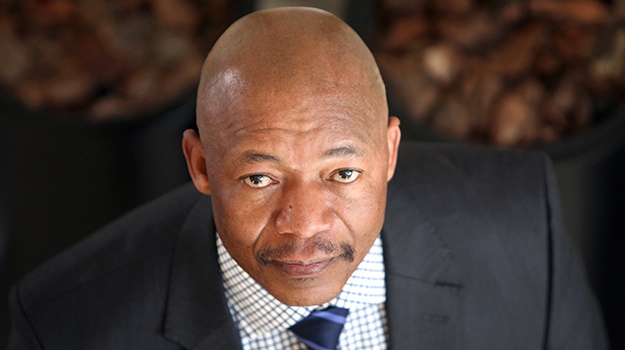 The long-awaited and newly released report into wrongdoing at the Public Investment Corporation, which manages civil servant pensions, details a litany of transgressions by its former CEO Dan Matjila.
The long-awaited and newly released report into wrongdoing at the Public Investment Corporation, which manages civil servant pensions, details a litany of transgressions by its former CEO Dan Matjila.
While other former PIC employees are also fingered, the report is scathing of Matjila’s “complete disregard” for transparency, and his consistent failure to take no individual accountability for material errors, mistakes or failures.
It also found that Matjila directly solicited donations for Cosatu and the ANC from individuals whose companies the PIC had invested in. The commission found large fee payments on deals to “privileged insiders”, often former employees of the PIC.
“The Commission found that there was both impropriety and ineffective governance in a number of investments. This was compounded by the dishonesty of and material non-disclosure by Dr Matjila, both during his evidence at the Commission and in decision-making processes regarding various transactions.”
This resulted in considerable losses, the commission found.
Under Matjila, the PIC made repeated investments with a small number of entities which presented a “repeat opportunity for enrichment of single individuals”.
It also found exorbitant fees paid to advisors, without detailed invoices as to costs incurred.
Here is some of the malfeasance that the report found:
AYO
The commission highlights Matjila’s “gross negligence” in the PIC’s R4.3 billion deal to buy a 29% stake in Iqbal Surve’s AYO Technology in 2017, at R43 a share. This was based on a valuation of AYO at R13 billion when in fact the company had total assets worth only R292 million.
READ | PIC investments in Survé’s Sekunjalo Group clearly flouted policy, report finds
Independent News and Media South Africa
The reports found that INMSA was not repaying a loan to the PIC and that Matjila showed “complete disregard of the PIC’s investment processes” in signing an agreement that allowed the PIC to swap its debt and shares in Independent for a stake in another Survé company, Sagarmatha, in December 2017.
“The proposed Sagarmatha transaction, including the suspected share price manipulation and essentially attempting to use the PIC’s own investment to pay the debt INMSA owed to the PIC, demonstrates a lack of ethics, lack of compliance with laws and regulation, and a disregard for the best interests of the PIC and its clients.”
Steinhoff
The commission found possible irregularities in Matjila’s conduct as part of R9.4 billion deal involving the purchasing of shares in Steinhoff.
There was a suspicion of “collusion” between Lancaster’s chairperson and sole shareholder, Jayendra Naidoo, and Matjila, and there was ultimately no reason for the PIC to invest in Steinhoff PIC invested in bankrupt Nigerian oil firm
The PIC provided a financial guarantee to group that explored oil in Nigeria, despite it being technically insolvent and against the advice of the PIC’s own energy experts and internal team.
“The question has to be asked as to how appropriate it is for an asset manager of a pension fund to invest in oil exploration, which is a high-risk endeavour,” the commission said.
Money paid to minister’s friend
Following a request from the former Minister of Intelligence David Mahlobo, Matjila authorised a payment of R500 000 to Pretty Louw for work related to a CSI project. Matjila was introduced to Louw by Mahlobo.
Businessman Lawrence Mulaudzi – who was in a relationship with a PIC director and benefited from a number of PIC deals – testified that Matjila asked that he pay money to Louw.
“Dr Matjila’s repeated efforts to have Mr Mulaudzi provide financial assistance to Ms Pretty Louw reflects the abuse of his office and influence over investee companies,” the commission found.
Jabu Moleketi
Harith was a company established to manage two PIC funds “at significantly high fees”. The former Deputy Finance Minister and former chair of the PIC, Moleketi, was appointed chairman of Harith.
“Harith’s conduct was driven by financial reward to its employees and management, and not by returns to the GEPF [government employee pension fund].
“In essence, the PIC initiative, created in keeping with government vision and PIC funding was ‘privatised’ such that those PIC employees and office bearers originally appointed to establish the various Funds and companies reaped rich rewards.”
The Commission recommends that the GEPF and the PIC should jointly appoint an independent investigator into Haith, and examine Moleketi’s conduct.
Millions for Edcon advice
The PIC paid almost R33.7 million to two advisors in a deal to facilitate its investment in Edcon – Kleoss Capital and former PIC employee Koketso Mabe of Keletso M Squared.
“The terms of the above agreement significantly disadvantage the PIC, to put it mildly,” the commission found, and recommended that the PIC review all contracts signed with advisors over the past five years.
It also recommended that the Edcon transaction be reviewed, to see whether the advisers really earned the money.
IT contraventions
The commission found that Simphiwe Mayisela, the former PIC senior manager of information security, obtained access to emails and other information of the PIC illegally. Mayisela got hold of privileged information and pass such information on to third parties, “with severe consequences for the PIC”, the commission found.
Attempted bribe in SA Home Loans deal
The commission wants a full investigation into the role of Wellington Masekesa, executive assistant to Matjila, after allegations that he asked SAHL to ‘regularise’ ‘arranging fees’ of R95 million in a funding deal between the PIC and the company.
 The mother of a schoolgirl, who was raped more than three years ago by a Gugulethu evangelical bishop, is still reeling from the trauma of the incident, and says the entire ordeal has left her having panic attacks.
The mother of a schoolgirl, who was raped more than three years ago by a Gugulethu evangelical bishop, is still reeling from the trauma of the incident, and says the entire ordeal has left her having panic attacks.  The long-awaited and newly released report into wrongdoing at the Public Investment Corporation, which manages civil servant pensions, details a litany of transgressions by its former CEO Dan Matjila.
The long-awaited and newly released report into wrongdoing at the Public Investment Corporation, which manages civil servant pensions, details a litany of transgressions by its former CEO Dan Matjila. outh Africa has only ever dipped below Stage 4 of load shedding once, but there’s a chance things could get worse if Eskom don’t play their cards right on Thursday. A series of outages and maintenance work already has the company working against a ‘record amount of power’ missing from the grid.
outh Africa has only ever dipped below Stage 4 of load shedding once, but there’s a chance things could get worse if Eskom don’t play their cards right on Thursday. A series of outages and maintenance work already has the company working against a ‘record amount of power’ missing from the grid.